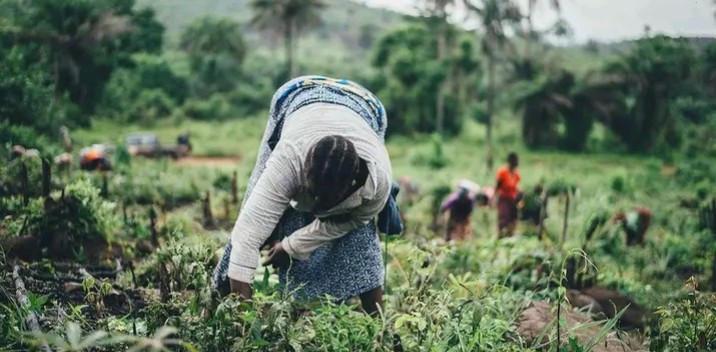It has been projected that number of hungry people in West and Central Africa may reach an all-time high of 48 million people (including 9 million children) next year if urgent and long-lasting solutions to address food insecurity are not delivered soon.
In a joint statement at the annual meeting of the Network for the Prevention of Food Crisis in West Africa (RPCA) in Lomé (Togo) recently, the Food and Agriculture Organization of the United Nations (FAO), the United Nations Children’s Fund (UNICEF) and the United Nations World Food Programme (WFP).
While urging Governments across the region to increase support and investments in food security and nutrition programmes that reinforce the resilience of communities, and protect their livelihoods, reducing the risk of people falling into catastrophic food insecurity.

According to the latest Cadre Harmonisé food security analysis shows that over 35 million people (including 6.7 million children) in West, Central African region, approximately 8 percent of the assessed population are currently unable to meet their basic food and nutrition needs.
As the situation is particularly worrying in conflict-affected areas of the Lake Chad Basin and the Liptako -Gourma region (Burkina Faso, Mali and Niger), where 25,500 people will experience catastrophic hunger (phase 5) during the June-August 2023 lean season.
Stated that this is the period of the year when food stocks from the previous harvest are exhausted, and families struggle to meet their basic food needs until the next harvest.
“The food and nutrition security outlook for 2023 is extremely worrying and this should be the last wake-up call for governments of the region and their partners,” said Chris Nikoi, WFP’s Regional Director for Western Africa Region.
“Strengthening the resilience of communities has to become a singular and collective focus for us all if we are to pull this situation back from the precipice before it is too late,” Nikoi added.
Despite the good harvest prospects, improved market situation, and increased cereal production estimates across the region, food insecurity and malnutrition persist and are spreading from the Sahel towards coastal countries due to persistent insecurity, climate shocks, high food prices, the economic fallout from COVID-19, and the impact of the conflict in Ukraine.
Across Benin, Cote d’Ivoire, Ghana, Guinea, Guinea-Bissau, Liberia, Sierra Leone, and Togo, the Cadre Harmonisé analysis reveals a 20 percent increase in food insecurity in the last quarter of 2022, compared to the same period last year.
In Nigeria alone, 25 million women, men and children are facing moderate or worse food insecurity, meaning they can easily fall into an emergency food security situation if no immediate response is provided.

“The Sahel is teetering on the brink of full-blown catastrophe; we are seeing food availability decline in most countries, and fertilizer prices are on the rise”, said Robert Guei, FAO’s Sub-regional Coordinator for West Africa.
“This could have a negative impact on harvests next year and worsen an already-grave situation for many rural communities. We must act now to shore-up rural livelihoods before it is too late” Guei added.
Despite efforts by governments and their partners, acute malnutrition in children under 5 is of concern, particularly in Sahel countries and in Nigeria with rates exceeding the 15 percent emergency threshold in some areas in Sénégal (Louga and Matam), Mauritania (Gorgol and Guidimaka), north-eastern Nigeria (Yobe and Borno states) and Niger (Dogon and Doutchi).
The global acute malnutrition rate also exceeds 10 percent in many areas around the Lake Chad Basin (Niger, Nigeria and Chad) and the border areas between Burkina Faso, Mali and Niger.
Conflict, population displacement, limited access to basic social services, including health care, education, water, hygiene, and sanitation, unaffordable nutritious diets are among the underlying causes of acute malnutrition in children under 5, pregnant women and nursing mothers across the region.
“The latest data indicates continuing unacceptably high levels of severe wasting for children in many countries in West and Central Africa, leaving a devastating impact on the region’s future,’’ said Marie-Pierre Poirier, UNICEF Regional Director for West and Central Africa.
“We need to scale up treatment and put much more attention on preventing child malnutrition through a multi-sectoral approach to reach every child,” Poirier added.
The three UN agencies and their partners commit to addressing this unprecedented food and nutrition crisis through a robust food systems approach involving multiple and integrated programmes that provide food, nutrition, health, water, hygiene, and sanitation response targeting children, women and other vulnerable groups.
FAO, UNICEF and WFP will reinforce and expand their ongoing support to national social protection systems that are responsive to shocks and sensitive to nutrition for pregnant women, nursing mothers, young children and adolescents.
Building on existing systems at local, national and regional levels – and with the full participation of local communities – the three UN agencies will also scale up their medium to longer term solutions aiming to reinforce resilience of crisis-affected communities, while supporting peacebuilding and peaceful coexistence.
UNICEF and WFP have been working together on a joint social protection programme in Mali, Mauritania, and Niger supporting 1.8 million people, through cash-based transfers and complementary services.
Both agencies also support governments to strengthen their social protection systems such as social registries, national policies, and linkages with early warning systems. FAO works in Burkina Faso supporting 620,000 people to boost their agricultural production capacities and protect their livelihoods.
FAO also supports the social protection system through cash-based transfers and complementary services targeting 408,000 people in the country.












